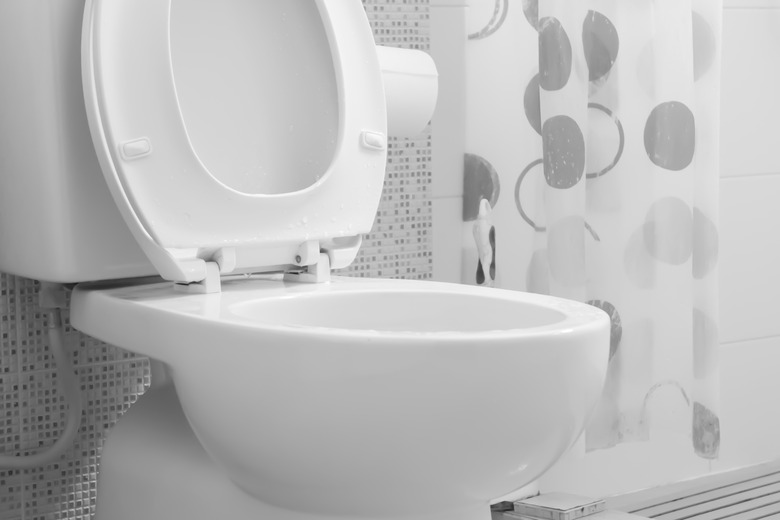How To Make A Toilet Seat Close Quietly
We may receive a commission on purchases made from links.
There are very few people on the planet who enjoy the sounds of a loud toilet seat. Whether it's the hinges squeaking or the lid banging shut, there's something uniquely annoying about a noisy toilet seat — particularly when you have to hear it opening and closing several times a day. Luckily, there are some methods you can employ to make a toilet seat close more quietly.
Fixing Noisy Hinges
Fixing Noisy Hinges
If the toilet seat's hinges are making discordant squeaking noises when in use, it might be that they just need a bit of lubricant. An all-purpose household lubricant can work wonders on squeaky toilet seats. Apply it to the seat's hinges, and lift and close the toilet seat a few times to work the product into the hinge. You should notice the squeaking getting quieter each time you move the hinges as the lubricant gets to work.
If the lubricant method doesn't work, it might be worth replacing your toilet seat hinges. You can even purchase specialized hinges to help the toilet seat close slowly. These hinges help make the toilet seat close in a softer, smoother way, which can also help with the other main cause of toilet seat noise — the lid slamming.
Minimizing Lid Noise
Minimizing Lid Noise
Alongside opting for slow-close hinges, the material of a toilet seat can make a difference in how loud it is when it closes. Heavier toilet seats, such as those made of wood or porcelain, can close more loudly than their softer, plastic counterparts. If noise is a big factor for you, it may be worth opting for a lighter toilet seat.
If you still prefer the look of a heavier toilet seat material, you may wish to consider installing rubber bumpers on the seat. This can be done quickly and easily — some even have peel-off backs and can be stuck in place. Rubber bumpers can also help to stabilize your toilet seat by adding friction.
Other Factors to Consider
Other Factors to Consider
If you've opted for a soft-close toilet seat but are still finding your seat too noisy, you may need to make some hinge adjustments. The hinges may have become too loose or moved out of alignment. You may need to remove your toilet seat to gain access to the hinges.
Loosen the nuts and adjust the hinges until they're realigned, and then retighten the nuts. Press the release button and lift the hinges into an upright position. This will lift them off of the hinge pins. Replace the seat and press it onto the hinge pins. Close the seat, ensure it's aligned properly and retighten the screws.
Another option for minimizing toilet seat noise is a padded seat. And you might find padded seats beneficial in terms of comfort and warmth too. They can be less hygienic, though, so thorough and consistent cleaning is essential.
If you want to try out a softer toilet seat but don't want to commit to replacing it just yet, a fabric toilet seat cover can be another good option. These can help muffle the sound of a noisy toilet seat closure, and they also feel cozy and comfy. They'll need regular washing, though, so it's worth buying multiples.
